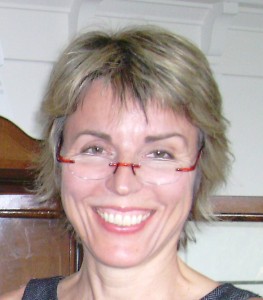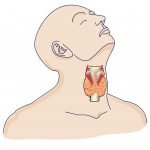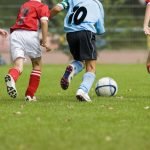Treating the Cause: Homeopathic Approaches to ADHD
Anke Zimmermann, ND
Attention deficit/hyperactivity disorder (ADHD), the most common behavioral disorder in children, is being diagnosed in epidemic proportions. Figures released by the US Centers for Disease Control and Prevention (CDC) show that approximately 11% of children aged 4-17 years, or 6.4 million children, have been diagnosed with ADHD as of 2011, the most recent year for which statistics are available.2 Boys are twice as likely to be labeled than girls, with the highest percentage found among high school boys. Testosterone, anyone?Looking for a place to grow your money? Consider investing in ADHD meds! Now that I have your attention, IMS Health has reportedly shown that sales of stimulants to treat ADHD in the United States, alone, have more than doubled, from $4 billion in 2007, to $9 billion in 2012.1 About 70% of these youngsters are given stimulant medications such as , methylphenidate extended-release, amphetamine/dextroamphetamine, and lisdexamfetamine. Questions of over-diagnosis versus an absolute increase-in-rate aside, ADHD can be a serious challenge for some children and their families, leaving academic performance and self-esteem in tatters or creating riptides of conflict with family members and peers. I’d like to share 3 cases from my practice which illustrate some of the different potential causes of ADHD and their treatment.
Case Study 1
In a Fog
I first met Leo, a thoughtful-looking 9-year-old boy, in June of 2012. The family and school were concerned about his lack of attention, dysgraphia, and slow reading and writing skills. He was diagnosed with ADHD of the “inattentive” type, as well as very superior intelligence. Leo had 3 siblings without any learning or attention concerns, and both parents were highly intelligent and educated.
History & Symptoms
During the consultation I noticed that Leo was somehow not really present, almost as if behind a wall. He trailed off several times when trying to answer my questions and frequently just looked into space. The mother and teachers also noted that he was spacey. History revealed that when Leo was about 9 months old, he fell off a change table by accident – on his head. He was rushed to the ER, assessed and released as “fine.” By the time he was 4 or 5 years old, his parents noticed that he had difficulty with multi-step directions and staying focused. Sometimes he was “hard to reach” and would have to be called repeatedly. He feels very sleepy on waking and he used to be awakened with difficulty, as if in a fog, even though he had lots of sleep. In my mind, the head injury stood out as a possible contributor to the ADHD. This was a very bright boy with a very bright, neurotypical and highly-functioning family, which, in my experience, is not the norm among most children with ADHD. We also did a hair analysis, which showed some mineral deficiencies.
Treatment
Leo received a trace mineral complex, tissue salts, vitamin B12, and ascorbyl palmitate. I also prescribed Helleborus 30CH [equivalent to 30C], twice a week, for the history of head injury and his overall foggy state.
Four months later
At a follow-up in October, 2012, the mother reported, “There is such a difference. He is more awake, more with it! Even his writing has improved. The teachers have also noticed the change and now he can do his homework on his own. And he is brimming over with love for me – he is much more expressive emotionally!” Even his soccer playing was different: “He has the same coach as last year and he commented on how much better his playing is. He is so much more engaged.” We continued the supplements and the Helleborus 30CH twice a week.
One month later
In November, 2012, Leo’s mother reported, “He is doing so much better. Now he enjoys reading – before it was just painful to him. And he is so much happier and more loving. Before, he was a bit catatonic, really, as if in a fog.” Plan: Helleborus 200CH, 2 pellets every 2 weeks for 2 months
Three months later
At a follow-up appointment in February of 2013, his mother reported “Leo is a totally different child! Now he loves to spell words. His handwriting is easy and legible now – before, he had lots of trouble. He is devouring books and is way less spacey. He has become a superstar in sports. He is taking piano lessons and the teacher is saying that he is just absorbing the music. He is all organized now and dresses himself in the morning – before, we had to nag him 5-6 times to get dressed. He is still much more connected to me and much more affectionate, with beautiful eye contact.”
Six months later
I did not hear from the family again until August of 2013, when I contacted them for an update. The mother wrote: “Leo has lost his diagnosis. He was just reassessed and nolonger has any ADHD. We are thrilled.”
Case Study 2
Clingy
I first met Andrea, a pretty 13-year-old girl who was diagnosed with ADHD on March 31, 2012. For about 1.5 years, she had been taking methylphenidate extended-release, which had helped her, but she wanted to try an alternative to medication.
History & Symptoms
Her symptoms included lack of focus, feeling fidgety, hyper and agitated, going off-topic in conversations, or talking for too long about a subject, especially if she was excited about it. “I like to keep going – go, go, go – always on to the next thing. And when I get anxious I tap my fingers a lot, which is really annoying to people around me.” She would get really attached to people and be afraid of losing them: “I get sad because I think they’ll leave and I’ll never see them again. My friends tell me that I am too clingy, but I am just afraid to lose them.” The pregnancy was emotional due to relationship difficulties between the parents. They subsequently separated when Andrea was still a baby. Each had another child with a new partner a few years later. Andrea splits her time between the parental residences, but feels kind of left out in both homes. “I never felt like I belonged, as if I’m not completely part of this or that group – always missing a piece.”
All Alone
Her worst fear was being left by her friends. If her friends ditched her, she would feel all alone with nobody to talk to, “like a toy that has been dropped.” A few years ago her grandmother died and her mother was very affected by it. Andrea felt abandoned by both, and also developed a strong fear of other people dying and leaving her. Andrea has always had many fears. She does not like being alone, is terrified of the dark, and used to have nightmares when younger. She is afraid of riding in the front seat of a car or flying in an airplane. After watching a show about bugs, she had nightmares about bugs crawling all over her. She used to be afraid of being possessed after watching certain shows on the supernatural. She is terrified that she might not be able to control herself and hurt someone else.
Treatment
This was a fairly obvious case of Stramonium, a commonly used remedy for children who feel alone and terrified of something bad happening to them, often with violent ideation, dreams or actions. Causes for this state can include traumatic events such as fright or loss with a sense of abandonment, or sometimes neurological trauma such as a head injury, a vaccination, or a high fever. It is an important remedy in the treatment of many behavioral and developmental disorders in children. Plan: Stramonium 1M
Seven months later
I saw Andrea for a follow-up on November 14, 2012. Apparently the remedy had worked rather well for the past 6 months. Andrea’s concentration improved greatly, along with her sense of agitation and her organizational skills. Andrea has been very happy with this remedy, even feeling closer to her family, and less clingy and fearful. Symptoms had been slowly relapsing over the past 2 weeks. Plan: Stramonium, 200CH
Nine months later
I didn’t see her again until August 28, 2013. All was well until quite recently, when her symptoms started to relapse again. I repeated Stramonium 1 MK, and she has been well since.
Comment
This was a great result from a constitutional remedy in the treatment of ADHD. Andrea’s system had been in a constant state of stress due to the deep-seated feeling of being abandoned and in danger. The remedy relieved this state and, therefore, her symptoms of ADHD and anxiety. She may need another dose here and there over the years.
Case Study 3
Blood and Guts
I first met Jake, a dark-haired 8-year-old boy, on May 1, 2012. He had been diagnosed with ADHD and an auditory-processing disorder about a year ago, and was currently attending a special school for children with developmental and behavioral problems. The main concerns were his lack of focus and poor social skills. He also had difficulty falling asleep at night. “I love to watch violent movies. I love all the blood, guns and knives.” We were off to a running start after only 5 minutes. “I really liked this movie about a guy who was chased by the police because he was killing everyone, and doing incredibly illegal things such as blocking off the doors to a hospital so lives would be lost.” He dreamt about a giant scorpion trying to kill him, “but I jumped backwards and killed it by landing on it! The scorpion was the size of my room and lots of blood came out of it.” Jake also liked killer plants, including pitcher plants and Venus fly traps. He said: “The Venus fly trap will suck nutrients out of me, and sun dew will make my mouth stick together – then I won’t be able to talk. The pitcher plant will make my stomach puff up like a balloon and then pop! and I’ll die.” He imagined himself being underwater and killing everything, including little kids. He interspersed his stories with wicked laughs, then told me “I’m stunned with boredness,” and added more wicked laughs. Then he said: “Hell is a place where you die and burn for infinity.” “Jake does not fit in. He lacks social awareness and gets in trouble a lot,” his mother told me in private. “He likes to figure out what people’s buttons are and will push them.” He was easily frustrated and unable to follow verbal directions if they were given quickly. He would only hear part of what was said. He would also answer a question but then not remember answering it at all. It is difficult for him to tell a story in the sequence of events.
A Complicated Pregnancy
The parents were going through a difficult time in their marriage and the mother was not very happy about the pregnancy at first. She started bleeding at 21 weeks, and it was discovered that she had placenta previa. She was hospitalized repeatedly for bleeding over the next 4 months, and given 2 steroid shots to help mature the baby’s lungs. She told me that she felt very lonely during the last 2 months of her pregnancy, as she was staying with relatives to help care for her other child when not in the hospital. Her husband only occasionally came to visit. Jake had a bad reaction to his chickenpox vaccine at age 1. His feet swelled up about 2 weeks after the shot. At around age 2, the mother noticed that Jake was a little obsessive-compulsive. He always wanted to be first to go through the door after coming home from day care. If not, he had to be taken back to the day care and start all over again. He received speech therapy for a language delay. His parents separated when he was 3, and the mother reported that Jake took it hard: “Up until that age he was organized, happy, and polite. After the separation and alternating homes, he started throwing watermelons at the walls.” Then at age 5, Jake had a severe reaction to the H1N1 flu shot, with a fever of 106 °F and convulsions. In Grade 1, he would not sit still during “circle time,” and would lie down and rock back and forth a lot. In Grade 2, he was inattentive, easily frustrated and angered, would ruminate about slights, took forever to fall asleep, and licked his lips a lot with anxiety. He received a psychoeducational assessment, and in Grade 3 was placed into the special school for children with developmental and behavioral concerns.
CEASE Therapy
Because of the early history of obsessive-compulsive tendencies, the rocking, ruminating, and the language delay, the auditory-processing problems, and the bad reactions to the varicella/chickenpox vaccine at age 1 and the flu shot at age 5, I suspected a dual vaccine injury and decided to start treatment with a varicella vaccine-clearing. I also had in mind the mother’s emotional state during the pregnancy and the family break-up. I decided to use Dr Tinus Smit’s method of CEASE Therapy for Jake – a wonderful system developed from his 30 years of experience in treating vaccine injuries.3 I gave Varivax 30CH twice a week for 1 week, followed by Varivax 200CH twice a week for another week, then IM and 10M in the same manner. In addition, Jake received ascorbyl palmitate (500 mg/day), vitamin C (1500 mg/d), zinc (15 mg/d), and fish oil.
Two months later
At a follow-up appointment in July, the mother reported that after the 1M and 10M of Varivax, Jake slept more and was less focused for a day or 2, but overall seemed to be a lot happier and calmer; in fact, he had recently received 2 compliments in school and in after-school care for being so calm. “His ability to listen to instructions has improved, as has his tendency to revenge.” “And he is not swearing as much.” Before, he was often cursing and swearing at school and had been assigned a “safe spot” in which to express inappropriate things. I had given the mother Dr Smit’s book, Autism – Beyond Despair, and she recognized many of Jake’s symptoms in Anacardium, a remedy Dr Smits uses a lot for children who feel victimized and split. I repeated the Varivax clearing, with instructions to repeat a dose to which he reacted more strongly for longer. Then I added a remedy to be given on Saturdays: Anacardium 30CH.
One month later
At a follow-up on August 11, 2012, the mother reported that other children were now much more interested in playing with Jake – even begging to get him on their teams. That had never happened before. He still forgets what he has just said. After the Varivax 10M, he had a nightmare. He had additional auditory testing, and the technician commented on how much more focused he was now. He is not talking as much about blood and guts.
One month later
In an email from September 13, 2012, his mother wrote, “The staff at the behavioral school cannot believe the change in Jake – like day and night. They say he definitely lets go of things quickly now and is able to tell them if he’s frustrated instead of just getting angry. He can finish tasks, whereas last year he needed assistance. One staff member even said he is a role model for the younger kids!” His writing was also much improved – initially he had great difficulties creating written output.
Vaccine Injuries and ADHD
I repeated the whole course of Varivax again, with each potency given twice a week for 2 weeks, and Anacardium on Saturdays.
Two months later
During a follow-up in November, the mother reported that Jake still had clear reactions to the Varivax, with aggravations in each potency, including a return to the “old” Jake, with lack of focus and increased aggression, but was doing very well overall.
Two months later
On January 19, 2013, Mom reported that he was doing so well that he was moved to a regular public school, and was now using an Individualized Education Plan (IEP) with a focus on his social skills. His written output was much improved and was he doing quite well behaviorally. At this point I decided to tackle the H1N1 vaccine to which he had a severe reaction at age 5, using the same protocol as described previously. I also changed his Saturday remedy to Carcinosin 30CH, as he was much milder now and there was a strong family history of cancer.
Two months later
In March, the mother wrote, “He is amazing, doing homework on his own. He had a reaction to the H1N1 30CH and became really clueless and not able to control an emotional outburst in school.” We continued the H1N1 remedies and Carcinosin.
Seven months later
I next heard from the mother on October 11, 2013: “I just had an IEP meeting with Jake’s school. First of all, he is doing amazingly. The only struggle now is focusing in math when there is noise in the class. Socially, he is doing really well, and they were shocked when I said that I was NOT medicating him and he has gotten this far on homeopathic remedies and some cognitive exercises. It is truly inspiring. They even went so far as to ask if Jake even needed an IEP any more – can you believe it! I just had to share this with you.”
Comment
Using Dr Smit’s method of CEASE Therapy (with an initial focus on the vaccines) along with constitutional remedies proved to be a good match for this boy. He is now a lovely, bright, highly creative and entertaining young fellow.
Summary
I highly recommend taking the training for CEASE Therapy, as it is so useful, not only in the treatment of autism, but also for many other developmental and behavioral challenges. CEASE Therapy has vastly improved my ability to treat these children and opened my mind to the multitude of factors involved in neurodevelopmental conditions. There are many stressors affecting children these days, from processed foods to family upheaval, frightening and overstimulating media exposure, and the use of multiple medications and vaccines. I believe that the increased rates of ADHD are a direct result of a combination of these stressors. As this article shows, a careful case history will help to elicit causative factors in individual cases of ADHD. Many of these children can be successfully treated with homeopathy and a few supplements – a very gratifying experience for child, parents, and practitioner, alike.

Anke Zimmermann, ND, is a naturopathic physician specializing in the homeopathic treatment of children with developmental and behavioral disorders. She graduated from Ontario College of Naturopathic Medicine (now called Canadian College of Naturopathic Medicine) in Toronto Canada in 1991, and practices in Victoria, Canada.
References
- The New York Times. Schwarz A, Cohen S. A.D.H.D. Seen in 11% of U.S. Children as Diagnoses Rise. March 31, 2013. NYT Web site. http://www.nytimes.com/2013/04/01/health/more-diagnoses-of-hyperactivity-causing-concern.html?pagewanted=all&_r=1&. Accessed May 13, 2014.
- Attention-Deficit / Hyperactivity Disorder (ADHD). Centers for Disease Control and Prevention Web site. http://www.cdc.gov/ncbddd/adhd/data.html. Accessed May 13, 2014.
- Smits T. Autism, Beyond Despair: CEASE Therapy: Homeopathy has the Answers. Haarlem, Netherlands: Emryss Publishers; 2010.









